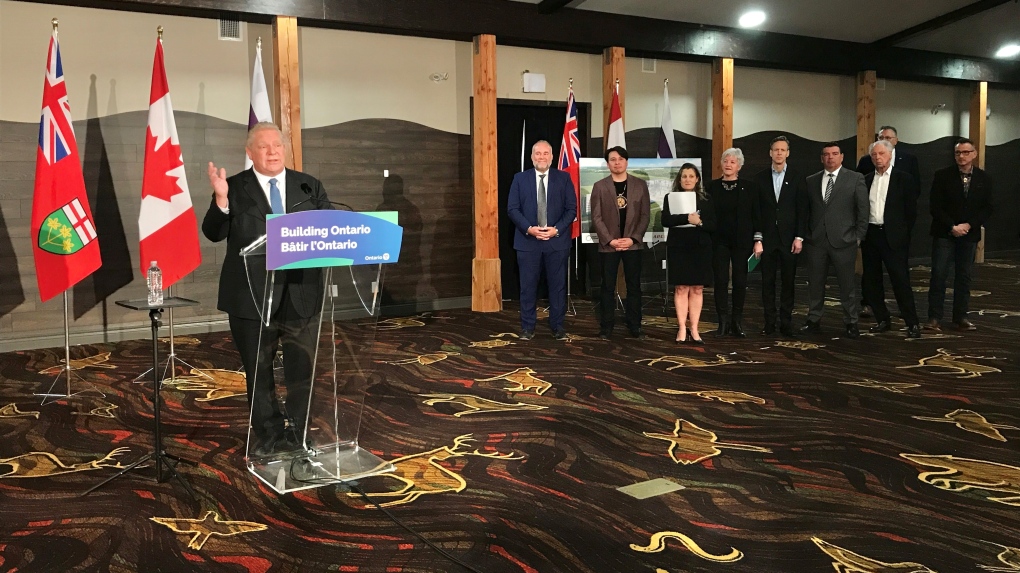
The Ontario government announced on Friday it is working to build Canada’s largest electricity battery storage project in Haldimand County.
On Friday, Ontario Premier Doug Ford and Deputy Prime Minister Chrystia Freeland made the announcement in Ohsweken, Ont.
The 250-megawatt Oneida Energy storage project is being developed in partnership with the Six Nations of the Grand River Development Corporation, Northland Power, NRStor and Aecon Group.
“It will more than double the province’s energy storage resources and provide enough electricity to power a city approximately the size of Oshawa,” said Ford.
The project will draw and store renewable energy during off-peak periods, releasing it to the Ontario grid when energy demand is at its peak.
“We need to continue to find ways to keep our energy clean and green,” said Ford.
The federal government said they are providing a further $50 million in funding.
The premier said the project will begin operating in 2025 and will more than double the amount of clean energy storage.
Officials with the Six Nations said they have invested in the project that will provide economic returns and 97 per cent of the construction workforce to build it.
«This project is an example of what is possible when private and public companies, multiple levels of government, and their agencies work alongside a progressive Indigenous partner in pursuit of innovative solutions,” said Matt Jamieson, President and CEO of Six nations of the Grand River Development Corporation. “As with all our development efforts, we have studied the project to ensure it aligns with our community values, we are confident the outcome will create ratepayer savings, and move us closer to a Net Zero future for our coming generations.»
According to the province, it has directed the independent electricity system operator to enter into a 20-year contract for this project with a goal to grow the province’s clean energy supply.
The province said the Oneida Energy storage project is expected to reduce emissions by between 2.2 to 4.1 million tonnes, the equivalent to taking up to 40,000 cars off the road.
The project will use large scale lithium batteries to store surplus energy from the power grid then feed it back into the system when it’s needed.
“Power that is generated and it can’t be utilized, this system will help harness that, store it for a period of time, and it will maximize value for the rate payer,” said Jamieson.
Jamieson said he is proud that the Six Nations is a founding developer in the project.
The facility will not actually be in Six Nations. It will be near the community of Jarvis in Haldimand County.
For Six Nationals elected Chief Mark Hill, it’s a major win.
“We want to continue to be a driver. We want to show Canada that we can also be a part of green solution,” Hill said.
But Hill admitted the Six Nations Community remains deeply divided over a number of longstanding issues.
“We still have a lot of internal affairs within our own community that we have to deal with. I think it’s really time once and for all to come together and figure this out,” said Hill.
The traditional leadership said they were left out of the decision making.
“No voice of ours was even heard today in that building,” said Deyohowe:to, the chief of the Cayuga Snipe Clan.
According to the Cayuga Snipe Clan, consultation with the Haudenasauene council is required for this type of development but they said it didn’t happen.
“We’ve never heard of this before. No one came to the community and said this was going to happen and for the community we are not going to let that happen,” said Deyohowe:to.
The Six Nations Development Corporation said it did reach out to the Haudenosaunee chiefs and sent multiple letters in 2021 inviting them to participate.